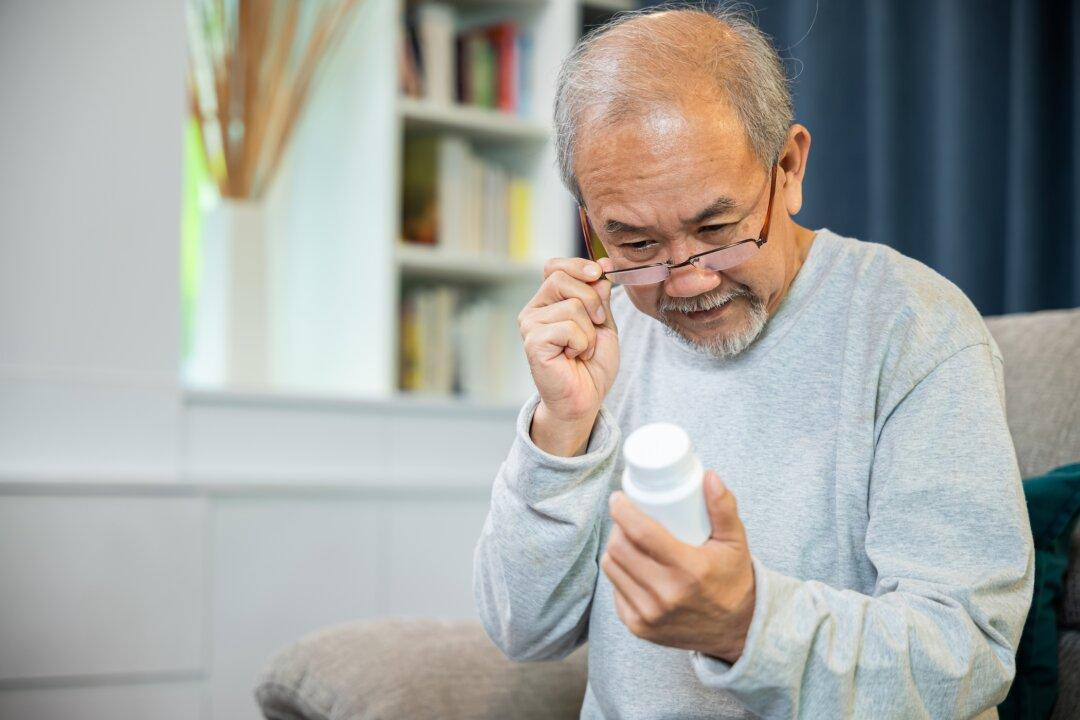A form of muscle loss, sarcopenia is a common condition affecting up to 12% of older adults. The progressive loss of skeletal muscle mass and strength is linked to an increased risk of physical disability, poor quality of life and death.[i]
Despite the lack of international consensus on diagnosing sarcopenia, it’s characterized by loss of skeletal muscle mass and function in older individuals along with a wide range of patients.[ii][iii]
1. Omega-3s
Omega-3 fatty acids are known to stimulate protein anabolism in animals and may benefit sarcopenia. To test this hypothesis, researchers randomly assigned 16 healthy older adults to receive omega-3 fats or corn oil for eight weeks.[v] Results showed that omega-3s stimulated muscle protein synthesis and may be useful for preventing and treating sarcopenia.
Omega-3 fats are deemed a useful therapeutic agent for the disease due to their anti-inflammatory properties targeting “inflammaging,” the age-related chronic low-grade inflammation assumed to contribute to the development of sarcopenia.[vi]
A diet rich in pro-inflammatory foods has, in fact, been correlated positively with the risk of sarcopenia, suggesting an anti-inflammatory diet may be one key to preventing it.[vii]
In addition, omega-3s may also have an anabolic effect on muscle by activating mTOR signaling and reducing insulin resistance. They may complement the effect of exercise or protein supplementation, with researchers urging a further review of the exact dosage, frequency or use of these fats for the said benefit.
2. Whey Protein
Protein supplementation is sometimes necessary to maintain skeletal muscle mass, and whey protein is among the best.
In two animal experiments, researchers found that whey protein attenuated induced muscle atrophy by enhancing the net protein content that regulates the synthesis and degradation of muscle protein.[viii] They dubbed the food a “necessary and probable candidate” for developing sarcopenia-fighting functional foods.
Highlighting the combined benefit of therapy and nutritional intervention, separate research found that, combined with omega-3s, polyphenols and electrical muscle stimulation, whey protein increased muscle strength in elderly adults suffering from limited mobility.[ix] Paired with Panax ginseng berry extract, soluble whey protein hydrolysate also ameliorated sarcopenia-related muscular deterioration.[x]
3. Exercise
Exercise leads to sustained benefits to sarcopenia in heart failure cases, helping to attenuate skeletal muscle wasting in this population.[xi] Among sarcopenic men of advanced old age, tai chi and whole body vibration were also found to be effective in improving muscle strength as well as physical performance.[xii]
A 2019 review of 331 articles also revealed that exercise was beneficial for skeletal muscle regeneration, muscle metabolism and motor function in mice with sarcopenia.[xiii] Interventions involved using treadmills, particularly for high-intensity interval training.
4. Miso
Diets marked by high consumption of fish, soybean products, potatoes, most vegetables, mushrooms, seaweeds and fruits, along with low rice intake, was inversely associated with sarcopenia in community-dwelling older Japanese.[xiv]
Miso is a fermented paste that is traditionally added to many Japanese dishes. In a cross-sectional study, habitual miso intake was associated with a low prevalence of sarcopenia in patients with Type 2 diabetes.[xv] Insulin resistance is considered a risk factor for the condition, which is characteristically present in type 2 diabetes sufferers.
5. Vitamin D
Studies on vitamin D supplementation, including a systematic review of 29 studies, offer compelling evidence of increased muscle strength.[xvi] Vitamin D deficiency is a common health problem globally, particularly among older individuals. Vitamin D regulates multiple human functions, including the skeletal muscle, so the fat-soluble vitamin may be crucial to maintain and improve muscle strength and physical performance over time.[xvii]In a 2012 study, greater visceral fat and lower muscle mass were associated with lower vitamin D3 levels among elderly Korean men.[xviii]Results suggested that screening for deficiency may be appropriate in the elderly with visceral obesity or sarcopenia.
Republished from GreenMedInfo.comReferences
[i] Kurose S et al “Prevalence and risk factors of sarcopenia in community-dwelling older adults visiting regional medical institutions from the Kadoma Sarcopenia Study” Sci Rep. 2020.[iii] Clin Cases Miner Bone Metab. 2014 Sep;11(3):177-80. https://pubmed.ncbi.nlm.nih.gov/25568649/
[iv] Domingues-Faria C et al “Skeletal muscle regeneration and impact of aging and nutrition” Ageing Res Rev. 2016 Mar ;26:22-36. Epub 2015 Dec 9.
[v] Smith G et al “Dietary omega-3 fatty acid supplementation increases the rate of muscle protein synthesis in older adults: a randomized controlled trial.” Am J Clin Nutr. 2011 Feb;93(2):402-12. Epub 2010 Dec 15.
[vi] Dupont J et al “The role of omega-3 in the prevention and treatment of sarcopenia” Aging Clin Exp Res. 2019 Feb 19. Epub 2019 Feb 19.
[vii] Geng J et al “Dietary inflammatory potential and risk of sarcopenia: data from national health and nutrition examination surveys” Aging (Albany NY). 2020 12 14 ;13(2):1913-1928. Epub 2020 Dec 14.
[viii] Shin J et al “Soluble Whey Protein Hydrolysate Ameliorates Muscle Atrophy Induced by Immobilization via Regulating the PI3K/Akt Pathway in C57BL/6 Mice” Nutrients. 2020 Nov 1 ;12(11). Epub 2020 Nov 1.
[ix] Boutry-Regard C et al “Supplementation with Whey Protein, Omega-3 Fatty Acids and Polyphenols Combined with Electrical Muscle Stimulation Increases Muscle Strength in Elderly Adults with Limited Mobility: A Randomized Controlled Trial” Nutrients. 2020 Jun 23 ;12(6). Epub 2020 Jun 23.
[x] Han M et al “Berry Extract and Soluble Whey Protein Hydrolysate Mixture Ameliorates Sarcopenia-Related Muscular Deterioration in Aged Mice” Nutrients. 2022 Feb 14 ;14(4). Epub 2022 Feb 14.
[xi] Cho J et al “Exercise as a Therapeutic Strategy for Sarcopenia in Heart Failure: Insights into Underlying Mechanisms” Cells. 2020 Oct 13 ;9(10). Epub 2020 Oct 13.
[xii] Zhu Y et al “Tai Chi and whole-body vibrating therapy in sarcopenic men in advanced old age: a clinical randomized controlled trial” Eur J Ageing. 2019 Sep ;16(3):273-282. Epub 2019 Mar 2.
[xiii] Guo S et al “Impacts of exercise interventions on different diseases and organ functions in mice” J Sport Health Sci. 2020 Jan ;9(1):53-73. Epub 2019 Jul 13.
[xiv] Yokoyama Y et al “Association of nutrient-derived dietary patterns with sarcopenia and its components in community-dwelling older Japanese: a cross-sectional study” Nutr J. 2021 Jan 18 ;20(7).
[xv] Takahashi F et al “Habitual Miso (Fermented Soybean Paste) Consumption Is Associated with a Low Prevalence of Sarcopenia in Patients with Type 2 Diabetes: A Cross-Sectional Study” Nutrients. 2020 Dec 28 ;13(1). Epub 2020 Dec 28.
[xvi] Nutrients. 2020 Oct; 12(10): 3189.
[xvii] Remelli F et al “Vitamin D Deficiency and Sarcopenia in Older Persons” Nutrients. 2019 Nov 21 ;11(12). Epub 2019 Nov 21.
[xviii] Seo J et al “Association Between Visceral Obesity and Sarcopenia and Vitamin D Deficiency in Older Koreans: The Ansan Geriatric Study” J Am Geriatr Soc. 2012 Feb 8. Epub 2012 Feb 8.







